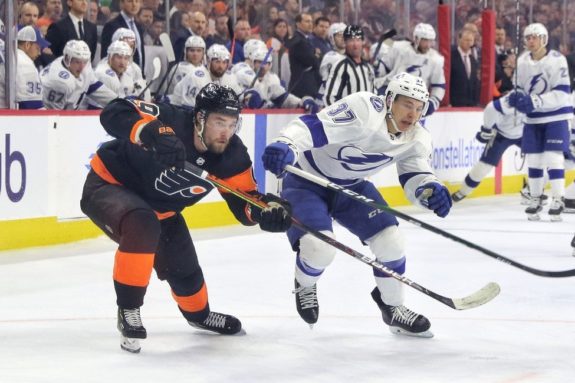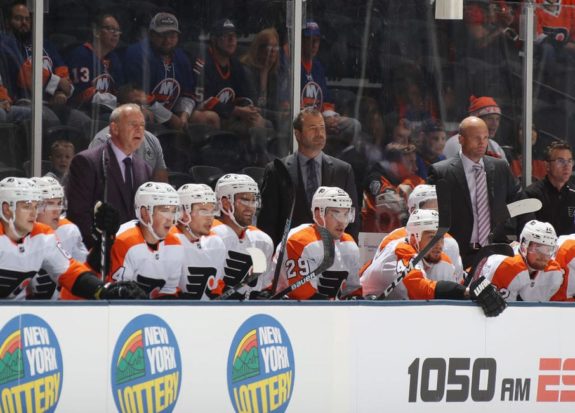The Philadelphia Flyers improved a great deal last season. Some areas of improvement were noticeable to even the casual fan. These included offense and goaltending, as the Flyers exceeded their goals scored per game and save percentage totals from the 2018-19 season. Other areas, however, were less apparent, but still crucial. One such example was discipline.
Last season, the Flyers recorded a total of 526 penalty minutes (PIM) and averaged 7.62 PIM/game. They were tenth best in the NHL in both categories. More importantly, prior to the stoppage of play, they were on pace to significantly outperform the 2018-19 team in these categories. That season, the Flyers recorded 731 penalty minutes and averaged 8.91 PIM/game. Both totals were just 22nd best in the league.

As these rankings show, in just one season the Flyers had a remarkable turnaround from being one of the league’s least disciplined teams to being one of its most. Let’s take a look at why this occurred and how it impacted the team.
A More Disciplined Roster
This season, the Flyers brought in a new coaching staff led by Alain Vigneault. The former Jack Adams Award winner surely preached smarter play to his team. After all, while coaching in New York, his Rangers were consistently among the league’s least penalized teams. In fact in 2016-17, the Rangers averaged just 7.23 PIM/game, third least in the NHL.

Another factor was the team’s revamped offense. If a team spends more time in its offensive zone, it only makes sense that they will take less penalties. As it turns out, the Flyers scored 3.29 goals per game last season, good for seventh best in the NHL. That was up from the 2.94 goals per game they averaged in 2018-19, which was 18th best in the NHL. A breakout season from Travis Konecny, as well as the Kevin Hayes signing, helped bolster the offense.
Finally, perhaps the biggest factor behind the team’s increased discipline was a few roster subtractions. In 2018-19, Wayne Simmonds led the Flyers with 90 PIM. Radko Gudas was third with 63 PIM, Jori Lehtera was seventh with 33 PIM and Ryan Hartman was tenth with 30 PIM. All four of these sin bin-frequenters departed the Flyers after the season.

In their place this season were newcomers, like Tyler Pitlick and Justin Braun, neither of whom spent much time in the penalty box. In fact, the Flyers’ leader in PIM this season was Joel Farabee with 39. He may have only appeared in 52 games, but regardless, his PIM/game rate was well below that of Wayne Simmonds in 2018-19.
Impact From Increased Discipline
Unsurprisingly, more discipline led to more success. When a team takes a penalty, it tends to lose momentum. When a team then concedes a power play goal, it loses even more momentum. If a team loses enough momentum, they will lose games. Thus, with the Flyers taking less penalties last season, they had less chances to lose momentum and won more games.
If we consider the numbers again, the Flyers’ PIM/game rate decreased by about a minute and 17 seconds this season. For a team whose penalty kill was good (81.8% success rate) but not great, it was important to get that time back. Had the Flyers’ PIM/game rate remained at 8.91, they very well could have given up another ten power play goals this season.

Given that the Flyers had ten overtime or shootout victories, as well as several close wins in regulation, they very well could have lost some of these games had they conceded another ten power play goals this season. Therefore, the impact from this increased discipline was huge. The Flyers will look to maintain this play next season.